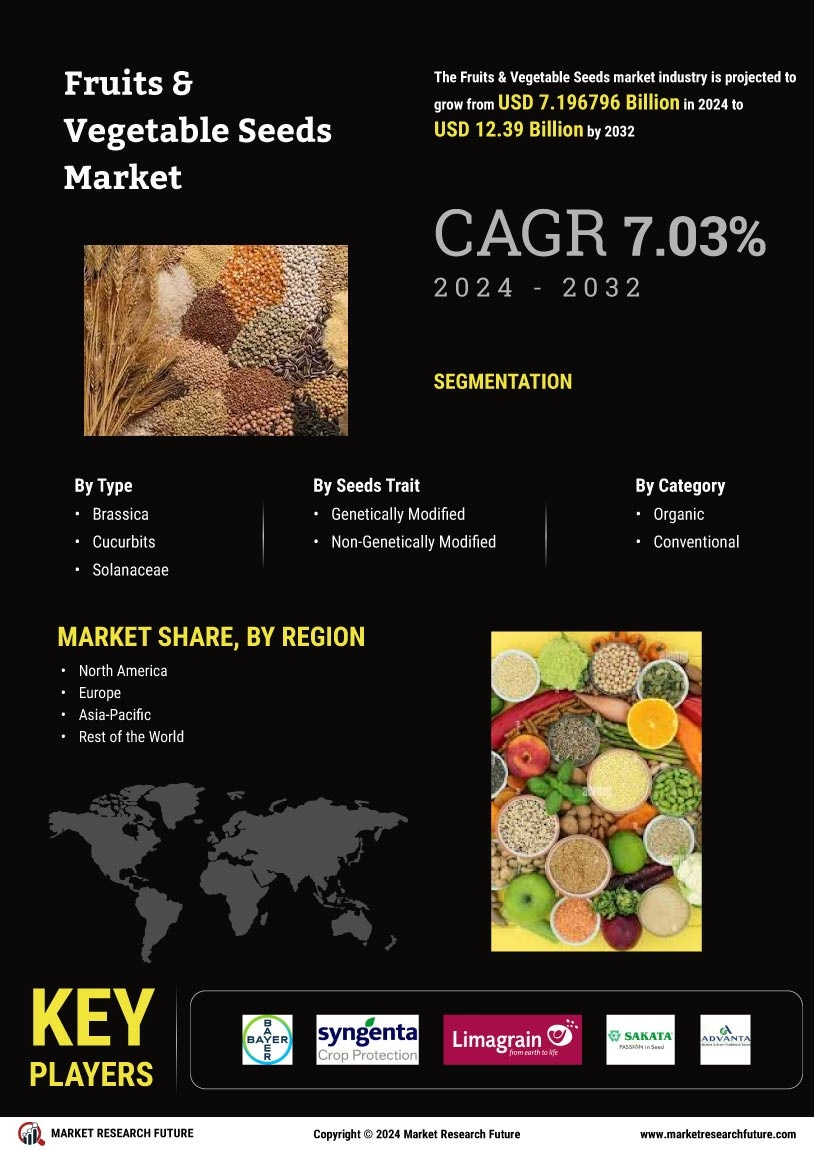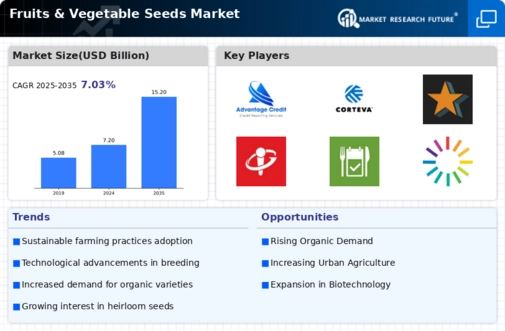Leading market players are investing heavily in research and development in order to expand their product lines, which will help the Fruits & Vegetable Seeds market, grow even more. Market participants are also undertaking a variety of strategic activities to expand their footprint, with important market developments including new product launches, contractual agreements, mergers and acquisitions, higher investments, and collaboration with other organizations. To expand and survive in a more competitive and rising market climate, Fruits & Vegetable Seeds industry must offer cost-effective items.
Manufacturing locally to minimize operational costs is one of the key business tactics used by manufacturers in the Fruits & Vegetable Seeds industry to benefit clients and increase the market sector. In recent years, the Fruits & Vegetable Seeds industry has offered some of the most significant advantages to medicine.
Major players in the Fruits & Vegetable Seeds market, including Bayer AG (Germany), Syngenta Crop Protection AG (Switzerland), Groupe Limagrain Holding (France), Sakata Seed Group (Japan), Advanta Limited (India), TAKII & CO., LTD. (Japan), Mahindra Group (India), Rijk Zwaan Zaadteelt En Zaadhandel B.V (Netherlands), Western Bio Vegetable Seeds Ltd (India), Maharastra Hybrid Seeds Company Private Limited (Mahyco), Corteva Agriscience (US), KWS SAAT SE & Co. (Germany), DLF Seeds & Science (Denmark), Invivo (France), Royal Barenbrug Group (Netherlands)Liquid Colours (Pty) Ltd. (South Africa), KALO (US), IFC Solutions (US) and others, are attempting to increase market demand by investing in research and development operations.
Research, development, manufacture, and marketing of products for agricultural and human health are all activities carried out by Bayer AG (Bayer). It provides treatments for a variety of ailments, including those related to women's health, cardiovascular disease, hematology, and ophthalmology. Additionally, it seeks to develop cutting-edge technology and chemicals for application in contemporary agriculture and medical. Seeds, crop protection products, diagnostic imaging tools, specialist drugs, over-the-counter (OTC) goods, prescription goods, and non-agricultural pest management products make up the company's product portfolio. Bayer's healthcare and crop protection products are primarily distributed through wholesalers, pharmacies, hospitals, and retailers.
It operates through a network of subsidiaries across Asia-Pacific, Europe, North America, Latin America, Africa, and the Middle East. Bayer's headquarters are in Leverkusen, North Rhine-Westphalia, Germany.
Sakata Seed Corp. (Sakata Seed), an agricultural company. Bulb plants, grass seeds, flower seeds, vegetable seedlings, flower seedlings, and gardening tools are among the items it manufactures and sells. Additionally, the company performs breeding, research, technical seeding assistance, landscaping and greening work, greenhouse work, and the construction of agricultural facilities under contract. Sakata Seed sells its goods through wholesale and retail establishments in both domestic and international markets. In addition to Asia-Pacific and Europe, the company also has activities in the Americas, the Middle East, and Africa. Sakata Seed's corporate office is located in Yokohama, Kanagawa, Japan.
Recent News:
Organically produced seed will be added to the portfolio of vegetable seeds offered by Bayer under the new Vegetables by Bayer umbrella, the company announced in April 2021. Tobacco, sweet pepper, and cucumber, which are three crucial crops for the greenhouse and glasshouse industries, will be the primary organically produced items at the time of commencement. In 2023, tomato rootstock varieties will succeed these. Vegetable seed varieties will be marketed and sold under the Seminis and De Ruiter brand names. The expansion of Bayer's portfolio is a direct response to the growing demand from customers for premium organic seed.
The demand for certified organic products among consumers worldwide is anticipated to continue increasing, which will propel market growth. According to the International Federation of Organic Agriculture Movements (IFOAM), the current value of the worldwide organic food market exceeds €106 billion. With a 6.2% CAGR, the global organic food seeds market is anticipated to increase from $355M in 2020 to $480M by 2025.The surge in demand for vegetable seeds offered by Bayer creates a significant opportunity for several customers to expand their enterprises, all the while advocating for consumer food diversity and facilitating availability of nourishing fruits and vegetables.
Syngenta Vegetable Seeds will introduce a "ToBRFV Resistant" seal in April 2024 to designate varieties that are resistant to the Tomato Brown Rugose Fruit Virus (ToBRFV). The seal represents Syngenta's dedication to providing disease-resistant varieties that safeguard yields against ToBRFV and other significant diseases; to uphold superior fruit quality in terms of flavor, shelf life, consistency, and transportability; and to persist in investigating potential remedies for ToBRFV and other pests that affect agricultural production. Syngenta scientists are seeking a complete resistance to ToBRFV that does not compromise produce quality, flavor, or resistance to other diseases.
Growers who receive the ToBRFV Resistant seal are assured of receiving a comprehensive tomato bundle, encompassing various threats such as pepino virus, tomato spot virus, leaf curl, fruit color, and shelf life.


















Leave a Comment